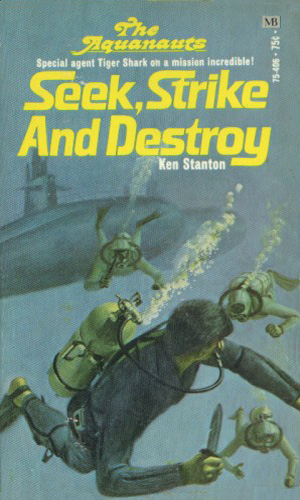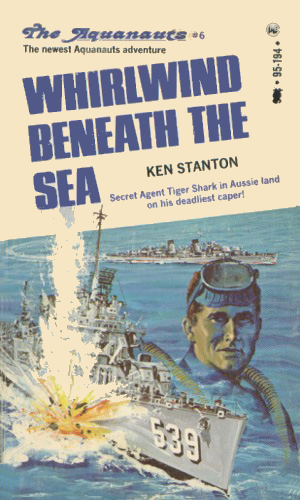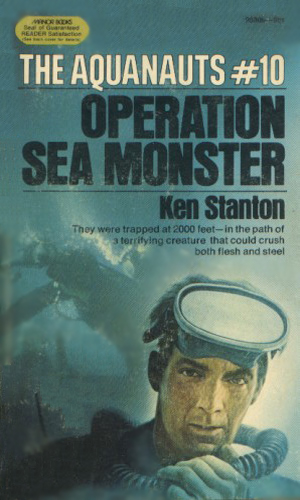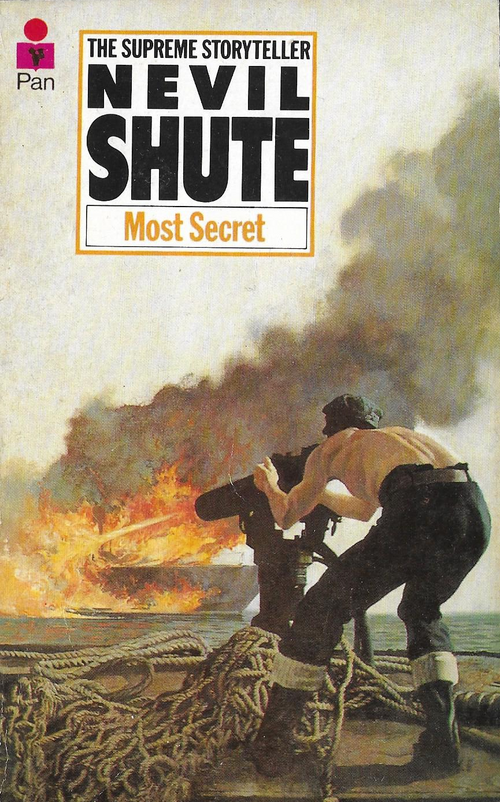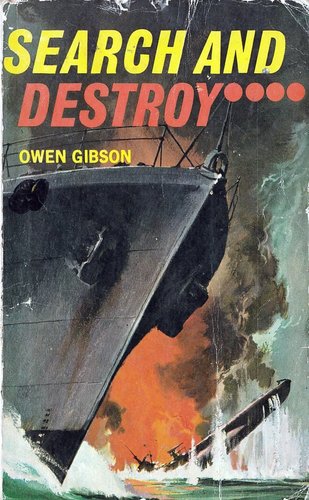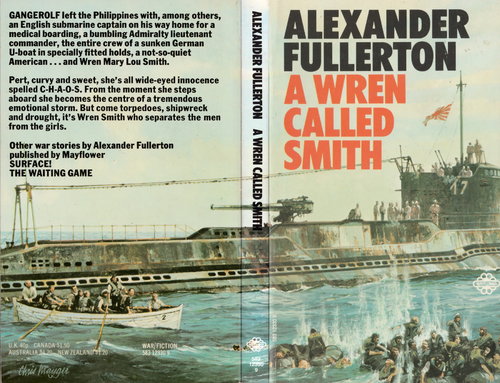- Joined
- 16 December 2010
- Messages
- 3,826
- Reaction score
- 4,249
Manning Lee Stokes (Pen name: Ken Stanton), Seek, Strike and Destroy, 1971
United States
USS Cuttlefish
'Destroyer', class not specified (Referred to as one of the "...old C Class Cans...")
Displacement: 1170 tons
Built: 1944
Speed: 36 knots
Described as being an 'overage rustbucket' at one point but now fully refurbished by SUS 'Black Money' and attached to that organizations chain of command.
No other details provided.
KRAB
Minisub
Crew: 1 + 1 passenger
Engine: "...miniature atomic reactor..."
Speed: 50kts (Max) (Submerged speed)
Maximum operating depth: 6mi (9.7km)
Description: "She was jet propelled, built like that most graceful of sea creatures, the manta ray..."
Equipment: "...exterior fangs and claws and legs and arms...", capable of producing "...oxygen from sea water...", also has an "...inertial navigation system..." that "...gave a constant position without need for external observation..." Fitted with a camouflage system that works in a similar way to the one that appears in the film 'Predator'.
Armament: 4 x torpedo tubes (2 forward, 2 aft) fire 'miniature torpedoes', three different guidance systems, thermal, acoustic, magnetic.
Note: The name is an acronym, for the full name see the entry for 'Cold Blue Death' (1970).
China (Peoples Republic)
Unnamed
Submarine (SSBN), class not specified
An exact copy of a US Ethan Allen Class Submarine. While the author simply refers to 'Polaris submarines' without specifying class, the dimensional details he does provide fit this class the closest.
Note: The author has one of his characters read from the submarines 2nd Officers log, but never gives the submarines name. In addition to this submarine the Chinese have built 14 others of the same type and at the time the story is set a further 11 are under construction.
For the Rocketry Mavens
Unnamed
Chinese copy of the Polaris SLBM
Details as per the original missile.
Plot summary: It is the early 1970s. When a renegade Chinese submarine commander decides to live fire his missiles off the California coast, only luck prevents the outbreak of WWIII. With the US Intelligence community reeling over missing China's ballistic missile submarine program, the Secret Underwater Service is tasked with locating the facility producing/housing the subs and taking it out by whatever means are possible.
Note: When initially published it was the third of the 'Aquanauts' series, when republished under the 'Tiger Shark' series name it became the second book in the series. As with the first book in the series, while there are some good set-pieces, the author seems to have had no idea of pacing, the first chapter for example is completely redundant, it's events should have, and indeed are relayed in dialog later on. Nor is there any specific dating information provided as in the first novel of the series, but presumably it's roughly contemporary with the date of publication. For more details on the series this novel is a part of see the entry for 'Cold Blue Death' (1970).
The plot idea of a nuclear submarine captain 'going rogue' and attempting an unauthorized launch first appeared (to my knowledge) in author Antony Trew's debut novel 'Two Hours to Darkness' (1963), which I have covered earlier in the thread.
United States
USS Cuttlefish
'Destroyer', class not specified (Referred to as one of the "...old C Class Cans...")
Displacement: 1170 tons
Built: 1944
Speed: 36 knots
Described as being an 'overage rustbucket' at one point but now fully refurbished by SUS 'Black Money' and attached to that organizations chain of command.
No other details provided.
KRAB
Minisub
Crew: 1 + 1 passenger
Engine: "...miniature atomic reactor..."
Speed: 50kts (Max) (Submerged speed)
Maximum operating depth: 6mi (9.7km)
Description: "She was jet propelled, built like that most graceful of sea creatures, the manta ray..."
Equipment: "...exterior fangs and claws and legs and arms...", capable of producing "...oxygen from sea water...", also has an "...inertial navigation system..." that "...gave a constant position without need for external observation..." Fitted with a camouflage system that works in a similar way to the one that appears in the film 'Predator'.
Armament: 4 x torpedo tubes (2 forward, 2 aft) fire 'miniature torpedoes', three different guidance systems, thermal, acoustic, magnetic.
Note: The name is an acronym, for the full name see the entry for 'Cold Blue Death' (1970).
China (Peoples Republic)
Unnamed
Submarine (SSBN), class not specified
An exact copy of a US Ethan Allen Class Submarine. While the author simply refers to 'Polaris submarines' without specifying class, the dimensional details he does provide fit this class the closest.
Note: The author has one of his characters read from the submarines 2nd Officers log, but never gives the submarines name. In addition to this submarine the Chinese have built 14 others of the same type and at the time the story is set a further 11 are under construction.
For the Rocketry Mavens
Unnamed
Chinese copy of the Polaris SLBM
Details as per the original missile.
Plot summary: It is the early 1970s. When a renegade Chinese submarine commander decides to live fire his missiles off the California coast, only luck prevents the outbreak of WWIII. With the US Intelligence community reeling over missing China's ballistic missile submarine program, the Secret Underwater Service is tasked with locating the facility producing/housing the subs and taking it out by whatever means are possible.
Note: When initially published it was the third of the 'Aquanauts' series, when republished under the 'Tiger Shark' series name it became the second book in the series. As with the first book in the series, while there are some good set-pieces, the author seems to have had no idea of pacing, the first chapter for example is completely redundant, it's events should have, and indeed are relayed in dialog later on. Nor is there any specific dating information provided as in the first novel of the series, but presumably it's roughly contemporary with the date of publication. For more details on the series this novel is a part of see the entry for 'Cold Blue Death' (1970).
The plot idea of a nuclear submarine captain 'going rogue' and attempting an unauthorized launch first appeared (to my knowledge) in author Antony Trew's debut novel 'Two Hours to Darkness' (1963), which I have covered earlier in the thread.
Attachments
Last edited:

